Typically, sales pipeline stages include prospecting, lead generation and qualification, engagement, proposal, closing, and the handoff to customer success.
Knowing and improving each stage boosts your sales efficiency and effectiveness.
This guide breaks down these stages to help you manage your sales pipeline better.
AI highlights
-
A sales pipeline is a roadmap showing where each prospect is in their journey, from initial interest to becoming a customer. It includes stages like awareness, consideration, and decision.
-
Sales pipelines and sales funnels are different. While the sales funnel tracks the buyer's journey, the sales pipeline maps out the seller's process, focusing on managing activities and forecasting sales.
-
Here’s a quick summary of the main sales pipeline stages for B2B sales teams:
-
Prospecting: Identify potential leads who might be interested in your product or service by scraping LinkedIn, monitoring competitors, and analyzing influencers.
-
Lead qualification: Determine which leads are worth your time by assessing their interest and fit for your product. Use lead scoring to prioritize.
-
Lead engagement: Engage with leads on social media before direct outreach to increase response rates. Automated tools can help you follow leads and send messages.
-
Proposal: Make your offer through various channels. Test different sales cadences to find out what works best.
-
Closing deals: Finalize the deal, ensuring all agreements are signed and last-minute details are handled.
-
Sales to customer success handoff: Share handoff documents and align both teams for ongoing support to ensure a smooth transition.
-
-
To track leads in the sales pipeline, use a good CRM to centralize and sync leads, set stages and lengths, and monitor conversion rates and metrics for smooth operation.
-
To maintain a healthy sales pipeline, regularly add new leads, monitor and clean them, and review and improve each stage.
-
Key sales pipeline metrics to track include call/contact volume, appointment percentage, lead response time, win rate, lifetime value (LTV), and acquisition cost.
What is a sales pipeline?
A sales pipeline is your sales roadmap, showing where each prospect is in the sales journey. Think of it as a flowchart that tracks a lead from the moment they show interest until they (hopefully) become customers.
The stages can vary depending on your business model, whether you’re product-led or sales-led, the size and roles of your sales team, and the complexity of your sales process.
Still, it should reflect the typical buyer's journey, which typically includes:
-
Awareness: The buyer realizes they need something.
-
Consideration: They start researching options.
-
Decision: They choose a solution.
Customizing these stages to fit your specific needs can make your sales prospecting process smoother and more predictable.
Sales funnel vs sales pipeline
Sales pipelines and sales funnels often get mixed up, but they’re not the same thing.
-
A sales funnel shows the buyer's journey from awareness to decision, narrowing down as they go. It’s more about tracking leads through the buying process.
-
A sales pipeline maps out the seller's process from prospecting to closing. Basically, it's managing activities and forecasting sales.
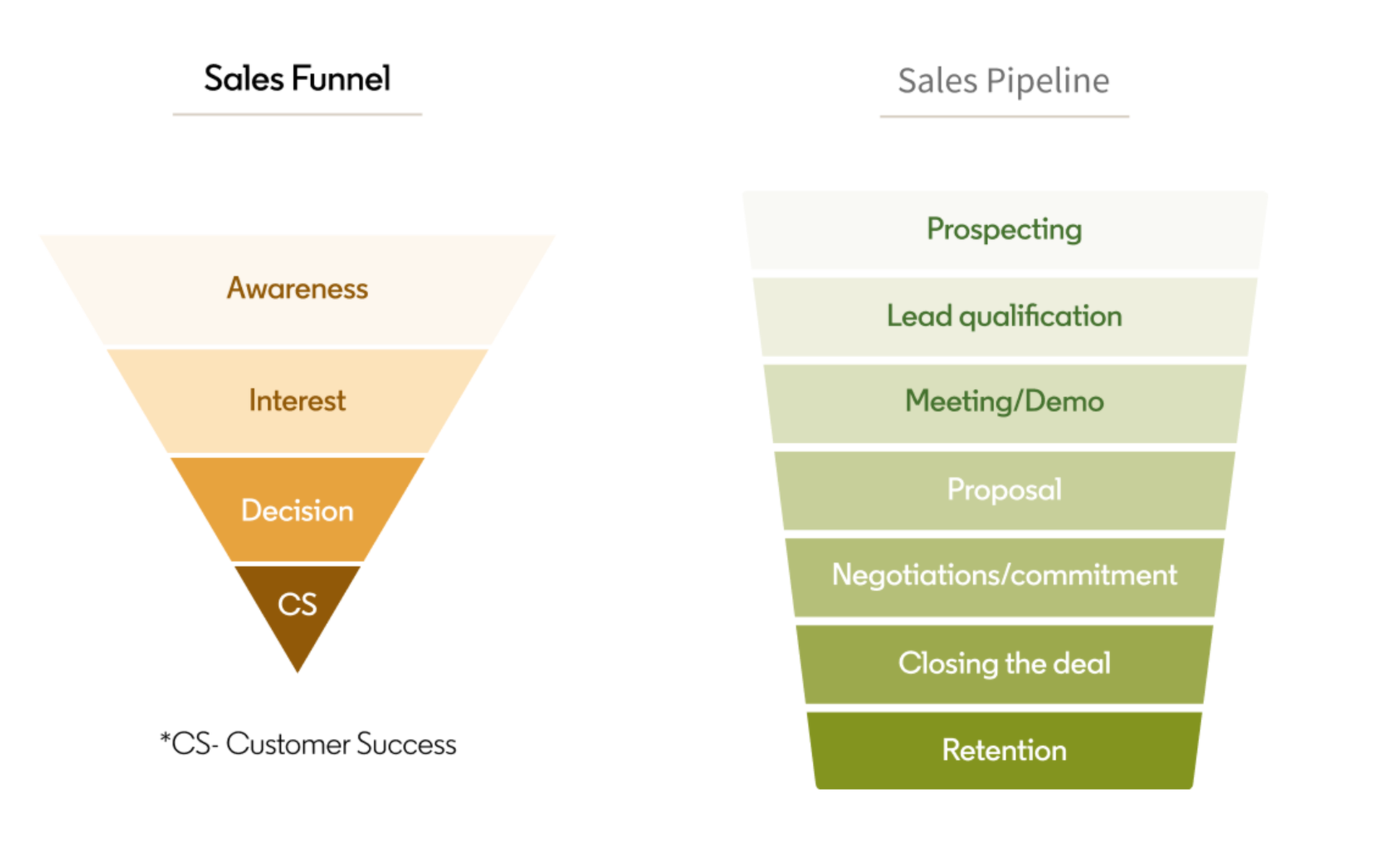
Sales pipeline stages for B2B sales teams
Every sales pipeline is unique, and the stages can vary depending on your specific process and industry.
Typically, a B2B sales pipeline includes prospecting, lead qualification, engagement, proposal, closing deals, and handing off to customer success.
But these stages aren't set in stone. Sales leaders have to adapt them to better fit their team's workflow and goals.
1. Prospecting stage
The sales prospecting stage is where you identify potential leads who might be interested in your product or service. It's all about finding and reaching out to the right people who could become customers.
Prospecting examples
To prospect effectively, you might:
-
Scrape LinkedIn: Use lead scraping tools to gather data from LinkedIn profiles, posts, and comments. This helps you collect detailed information about potential leads.
-
Monitor competitors to identify intent signals: Look at who is engaging with your competitors' content. This can give you clues about people who are interested in similar products.
-
Analyze influencers: Check who is interacting with industry influencers. These individuals are likely to be interested in your offerings.
2. Lead qualification stage
In this sales pipeline stage, you identify which leads are worth your time.
You assess how likely they are to become customers based on their interest and fit for your product.
By doing this, you can prioritize and focus on the best opportunities.
Lead qualification example
Lead scoring is a handy method here.
You give points based on factors like engagement and demographic info to rank your leads. This way, you can zero in on those most likely to convert.
PhantomBuster AI LinkedIn Profile Enricher helps you pull detailed information from LinkedIn profiles into your lead lists.
It automatically gathers data like job titles, companies, and career history, giving you a fuller picture of your leads.
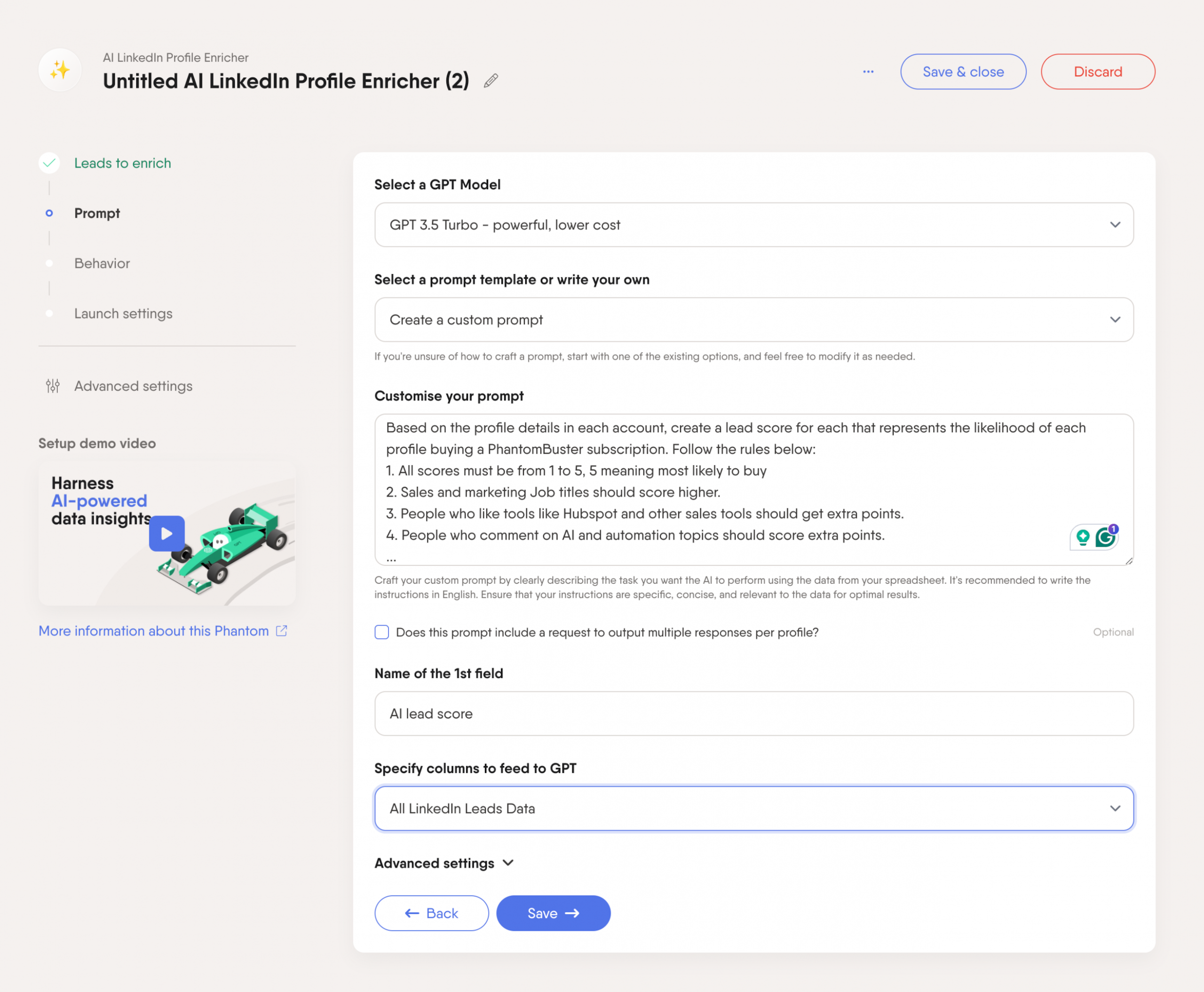
That way, you can score leads more accurately and personalize your outreach better, improving your sales efforts.
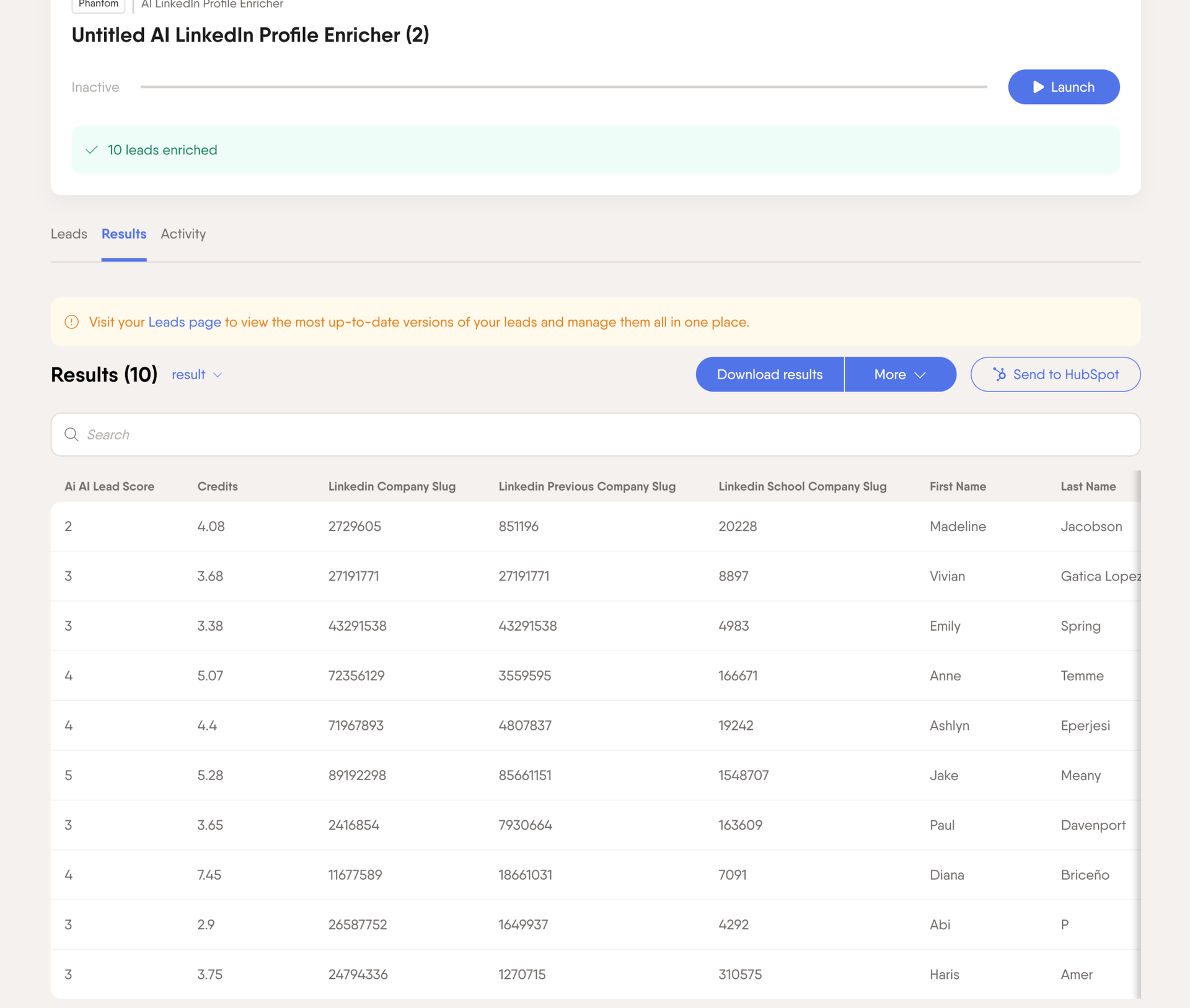
Plus, it saves you time by keeping your CRM updated with fresh, high-quality data effortlessly.
3. Lead engagement
Social selling is the way to go now for better results. Engaging with your leads before direct outreach makes a huge difference.
Why?
Because social media interactions let sales managers get in touch directly with your leads, which makes them more likely to respond.
Lead engagement example
A simple but effective strategy is to automatically follow leads and like their posts before connecting.
This warms up the lead and increases the chances of a positive response.
With PhantomBuster LinkedIn Outreach Flow, you can easily automate this process.
It sends connection invites, introduction messages, and up to three follow-up messages, so you don't miss anything.
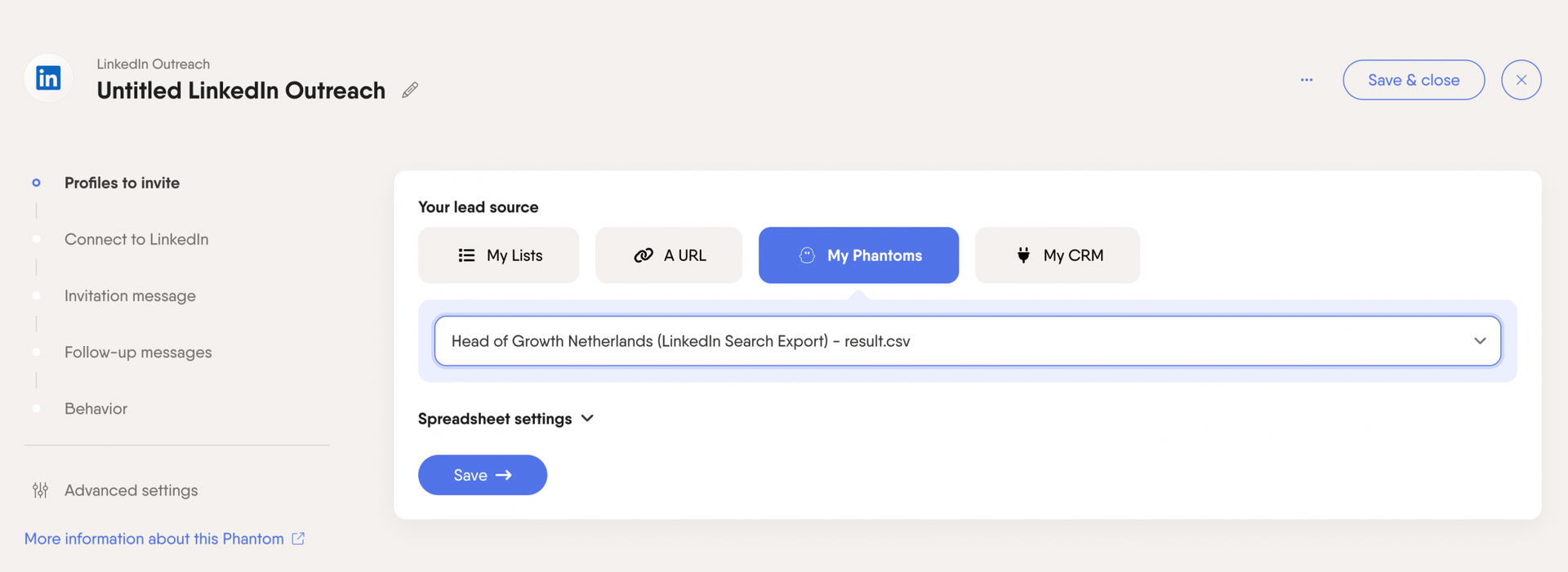
4. Proposal
The proposal stage is where you make your offer to potential clients. You can do this through social media, email, or other channels.
Proposal examples
Take the time to experiment with different sales cadences to see what works best. Here are two examples:
The LinkedIn Engagement and Pitch
In short, you're building a relationship on LinkedIn before you pitch. Build trust by engaging with your leads' content.
-
Day 1: Follow them on LinkedIn
-
Day 2: Like posts
-
Day 3: Comment on a post
-
Day 4: Send a connection request and follow-up thank you InMail
-
Day 5: Send a resource (ebook, report, whitepaper)
-
Day 8: Follow up with a personalized demo proposal
-
Day 10: Send a final proposal email with a call to action
Traditional B2B Sales Cadence
This sales cadence is highly effective in targeting industries that prefer direct communication. It focuses on phone calls and emails to build rapport and deliver the proposal.
-
Day 1: Make the first phone call
-
Day 2: Send a follow-up email asking to book a meeting
-
Day 4: Try another phone call
-
Day 7: Send a personalized video message via email
-
Day 10: Send a detailed proposal email with key benefits
-
Day 14: Follow up with a value-driven proposal call
Consistent follow-ups are essential. About 80% of sales typically require 5 follow-up calls after the initial meeting. Consistency and communication are critical throughout the sales cycle.
5. Closing deals
Closing deals is where everything comes together. It's when your prospect becomes a customer or decides not to. Communication is key here.
You need to make sure they're ready to go and that contracts or agreements are signed. You'll also deal with last-minute details, like arranging payment and setting delivery dates.
Smooth closings leave a good impression on future deals like upsells.
6. Sales to customer success handoff
After you close a deal, make sure that your customer success team completes the job smoothly. This step is important for onboarding and retention.
Share a detailed handoff document with customer success that covers the client’s goals, pain points, and any promises made during the sales process.
Keep your sales and customer success teams in sync so everyone stays on the same page.
From the start, you're helping the customer feel well-supported, paving the way for a long-term relationship.
How to track leads across various stages of the sales pipeline stages
Keeping track of your leads throughout the sales funnel helps you stay organized and ensures nothing slips through the cracks.
Here’s how to do it:
Choose a CRM software
First, get a good CRM software. It centralizes your lead info, making it easy for your team to access and engage with leads.
HubSpot is a great option because it integrates well with other tools you might be using.
It keeps information flowing and lets you track each lead's journey through your sales pipeline.

Set the stages and length of your sales pipeline
Start by looking at your existing customers to gather data on how they moved through the sales pipeline.
This will help your sales team understand which sales pipeline stages are necessary for your business and how long each stage should last.
If you're just starting out or don’t have much data, make educated guesses based on your industry standards and similar businesses.
Here are some examples of different sales pipeline stages and lengths:
Short B2C Sales Pipeline (3-4 stages)
-
Awareness: Potential customers learn about your product.
-
Consideration: Customers evaluate your product.
-
Decision: They decide whether to purchase.
-
Purchase: Transaction is completed.
Standard B2B Sales Pipeline (6-7 stages)
-
Prospecting: Identify potential customers.
-
Lead qualification: Determine if leads are worth pursuing.
-
Discovery/needs analysis: Understand customer needs.
-
Proposal/quote: Present your solution.
-
Negotiation: Discuss terms and conditions.
-
Closing: Finalize the deal.
-
Post-sale follow-up: Ensure customer satisfaction.
Enterprise Software Sales Pipeline (8-9 stages)
-
Lead generation: Gather potential leads.
-
Initial qualification: Assess lead potential.
-
Discovery call: Discuss needs and solutions.
-
Technical assessment: Evaluate technical requirements.
-
Solution presentation: Present the solution.
-
Proof of concept: Demonstrate the solution.
-
Contract negotiation: Discuss contract terms.
-
Legal review: Finalize legal aspects.
-
Closing: Close the deal.
Understanding tasks at each stage also helps manage your pipeline effectively.
This means the best way to organize and streamline your sales process is to define specific tasks for every stage.
For example, during the prospecting stage, tasks may include identifying leads and reaching out via email or phone. At the proposal stage, duties might involve preparing and sending a detailed proposal.
Sync leads to your CRM
Using a CRM like HubSpot helps streamline your sales process. It collects leads from various sources, such as lead engagement forms and other inbound methods, so you can quickly build and manage lists.
Prospecting is the first step for your sales team, so they need to sync lead lists.
This is where integrations help.
With PhantomBuster HubSpot Contact Sender, you can automate these tasks. You can send new LinkedIn connections to your HubSpot CRM, saving you from manual data entry.

This keeps your CRM updated and organized and frees off duplicate contacts.
Monitor conversion rates and metrics
At every step of your sales pipeline, from prospect to potential customer, you need to monitor conversion rates (CR) and metrics. This helps you determine the effectiveness of your leads.
When your leads are qualified well, you'll see higher sales conversions.
Improvement is key. Benchmark your numbers and try different approaches to boost conversions. Keep refining your process as you learn.
By doing this, you'll keep your sales pipeline running efficiently.
Best practices for a healthy sales pipeline management
To keep your sales team productive, you've got to manage your sales pipeline effectively.
Here are some best practices for managing your sales pipeline:
Add new leads to your pipeline regularly
Consistent prospecting is necessary to keep your pipeline full. Without good and fresh leads, conversion rates will drop. It’s like keeping a garden—you must plant new seeds to keep it growing.
Here are some straightforward tactics to ensure a steady stream:
-
Warm up leads before outreach: Engage with your leads early so that they already recognize your name when you reach out.
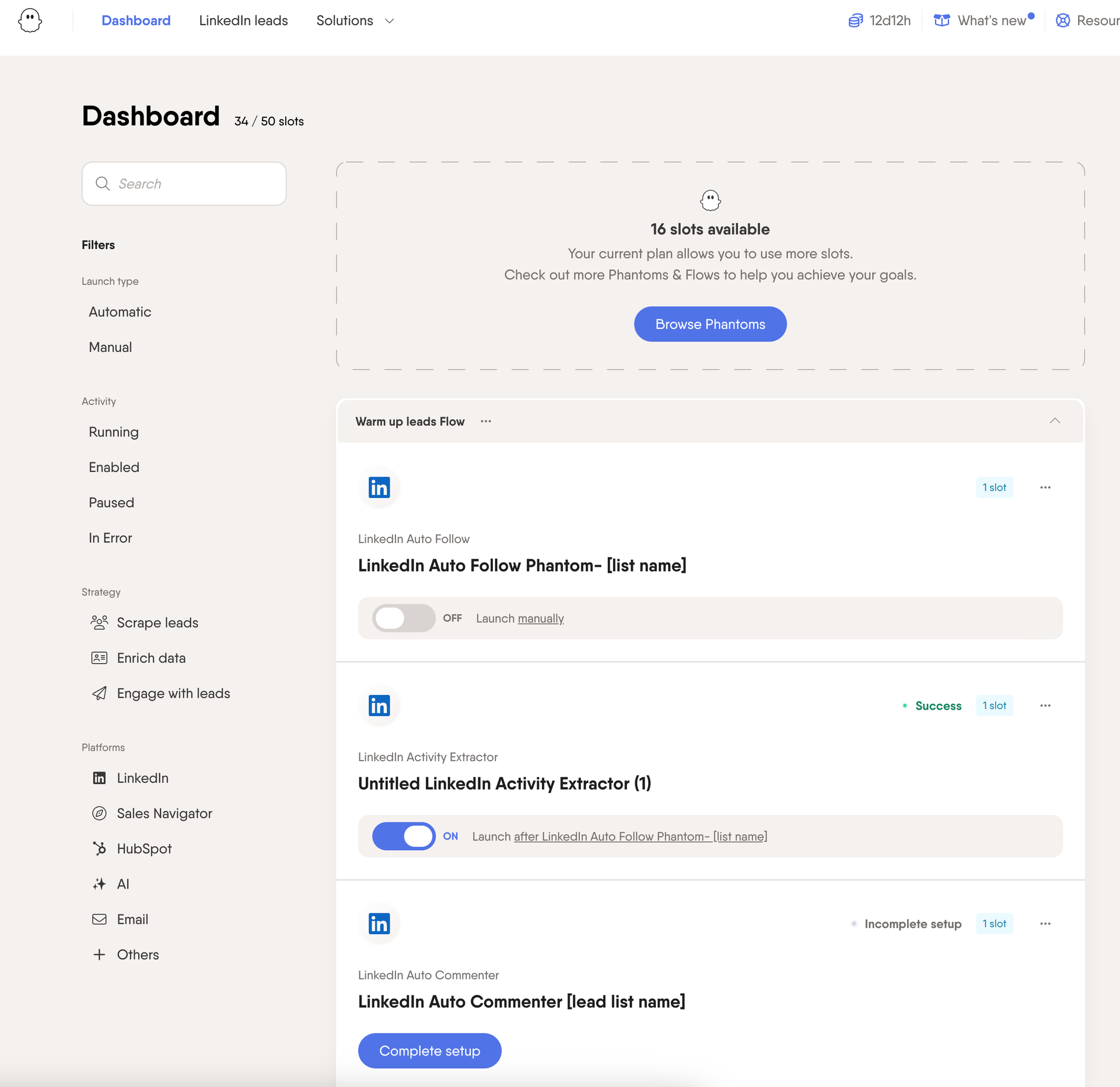
-
Monitor competitors: Keep an eye on what your competitors are doing to identify potential leads engaging with their content.
-
Scrape LinkedIn events: Gather attendee lists from LinkedIn events to send personalized messages.
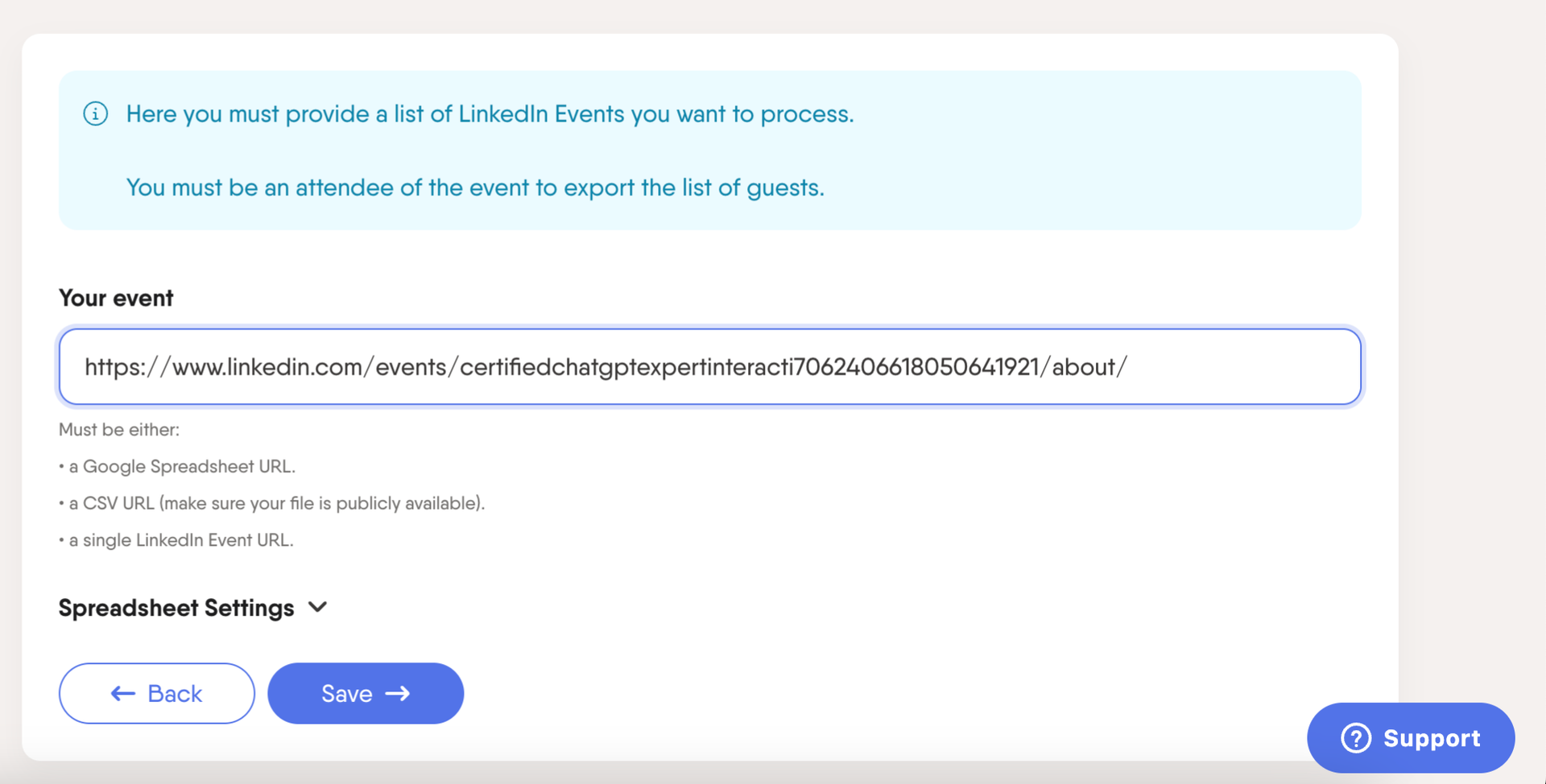
-
Segment and personalize: Ensure your lead lists are well-segmented to send personalized messages for better engagement.
Monitor and clean your sales pipeline
Without maintenance, your sales pipeline can get clogged with dirty data. Keep things flowing by removing prospects who are stuck or no longer interested.
Leads might look good on paper, but if they don't move forward, they're just clutter.
Identify leads that have lingered too long in the sales cycle. Try nagging them, and if they don't respond, remove them from your active pipeline or mark them for lead nurturing.
Review and improve each sales pipeline stage
Start by analyzing the conversion rates at each stage of your sales pipeline. Your CRM will help you calculate these rates.
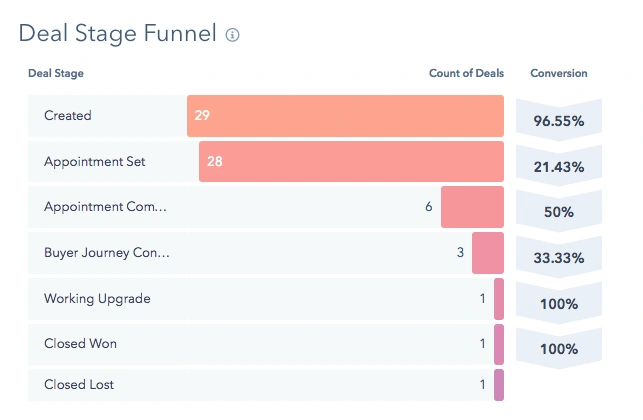
Look closely at the activities and tasks in each stage of your sales pipeline. If you see low conversion rates at a particular stage, check the channels used and the number of follow-ups.
Regular pipeline reviews help identify areas for improvement and highlight successful sales activities.
Use your CRM data to discuss where deals tend to get stuck and find ways to improve.
Sales pipeline metrics to track
Track your key metrics regularly to keep your sales pipeline healthy. These metrics let sales reps know how their sales process is doing and where you might need to tweak it.
Here are some important sales metrics:
-
Call/contact volume: Number of calls or contacts made.
-
Percentage of appointments: Ratio of contacts to appointments set.
-
Lead response time: Time spent responding to leads.
-
Number of Marketing Qualified Leads (MQLs): Count of leads that meet the marketing team's criteria for being sales-ready.
-
Win rate: Percentage of closed deals out of total opportunities.
-
Lifetime value (LTV): Total revenue expected from a customer over their entire relationship with your company.
-
Acquisition cost: Cost of acquiring a new customer.
-
Sales "Magic Number": Ratio of new annual recurring revenue (ARR) to sales and marketing spend.
Conclusion
Now that you’ve understood the B2B sales stages, you’re ready to optimize your sales process.
Remember, the key to successful sales pipelines is regular monitoring and tweaking. Stay proactive in managing your sales targets, and don't hesitate to experiment with new strategies.
Ready to automate? Try PhantomBuster for free for 14 days and see the difference automation can make in your sales process.
